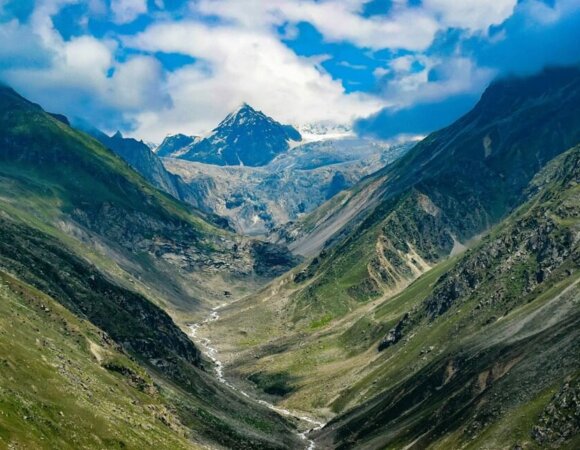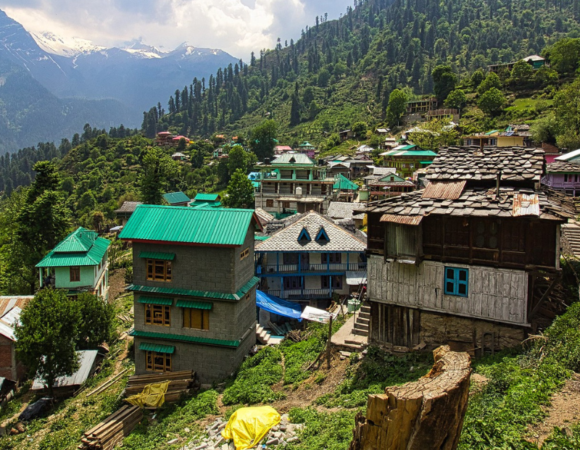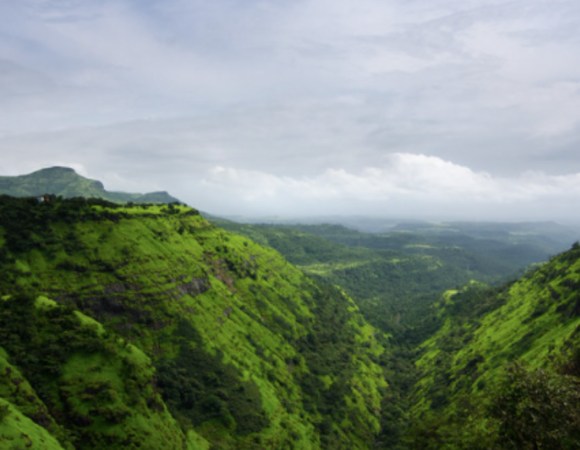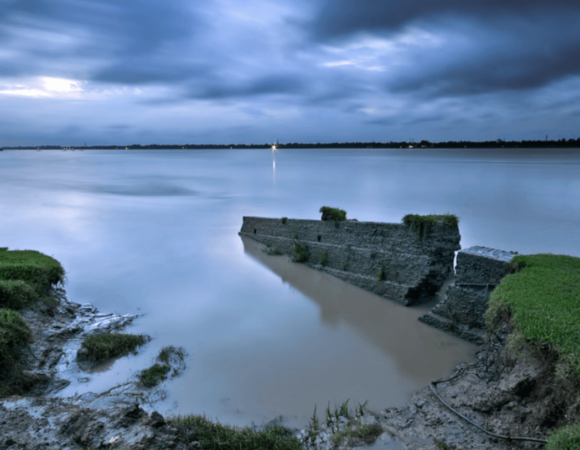Hiware Bazar: A Testament to Resilience and Innovation
Hiware Bazar, a small village nestled in the arid landscapes of Maharashtra, was once known for its dire conditions. In the 1980s, the village faced a multitude of challenges—severe droughts, migration, dwindling agricultural productivity, and high rates of crime and alcoholism. The village had become synonymous with poverty and struggle. However, Hiware Bazar experienced a remarkable transformation in the face of adversity. Today, it is a thriving model of sustainability, environmental conservation, and community-driven development. The journey of Hiware Bazar’s transformation from a drought-stricken village to an eco-friendly success story is nothing short of inspiring.
Table of Contents
ToggleA Village in Decline: The Crisis of the 1980s
In the 1980s, Hiware Bazar was grappling with extreme water scarcity, which led to reduced agricultural productivity and an economic downturn. The once prosperous agricultural village faced an exodus of its people, leaving behind a declining community. High crime rates and rampant alcoholism were additional burdens, and the future looked bleak. The villagers faced the grim reality that their land could no longer sustain them, and the situation seemed hopeless.
A Leader Emerges: Popatrao Pawar’s Vision

The turning point came in 1991 when Popatrao Pawar, a visionary leader, became the Sarpanch (village head) of Hiware Bazar. Under his leadership, the village began to transform into a model of environmental stewardship and social responsibility. Pawar, with the support of the villagers, introduced several innovative and sustainable practices aimed at reversing the degradation of the land and improving the quality of life for all residents.
One of the key principles Pawar advocated for was that the entire community needed to come together to adopt environmentally sustainable solutions. The focus shifted from immediate survival to long-term prosperity through conservation and careful management of natural resources.
Eco-Friendly Solutions That Worked
The transformation of Hiware Bazar was not accidental. It was a result of strategic interventions that revolved around ecological sustainability. Some of the most effective solutions the village implemented include:
Watershed Management:
Check Dams and Trenches Watershed management was a cornerstone of Hiware Bazar’s revival. The village implemented a series of check dams and trenches to capture rainwater and prevent runoff. This method allowed for the recharge of underground water tables, providing much-needed water for agriculture, livestock, and domestic use. The check dams also helped conserve soil and prevent erosion, which was crucial for maintaining the fertility of the land.
Afforestation and Forest Conservation:
To counter the desertification of the region, afforestation became a priority. The villagers planted trees and worked to conserve existing forests. This not only helped in improving the soil quality and preventing erosion but also provided a sustainable source of wood and other resources. The green cover also helped restore the local climate and brought back wildlife.
Banning Water-Intensive Crops and Borewells:
One of the significant issues Hiware Bazar faced was the overuse of water resources for cultivation. Crops that required excessive water, like sugarcane, were banned. The villagers switched to more drought-resistant crops that could survive in the arid environment, such as millet and pulses. The use of borewells, which drained underground water reserves, was also banned to preserve the water table.
Stall-Feeding Cattle to Protect Grasslands:
To prevent overgrazing of grasslands, the villagers adopted the practice of stall-feeding cattle. This was an essential strategy to ensure that the fragile grasslands were not depleted and could regenerate. By controlling grazing patterns, the village also improved its livestock productivity.
The Green Revolution: A Village Transformed

Today, Hiware Bazar stands as a shining example of the power of sustainable living. The village, once plagued by water scarcity and poverty, has undergone a complete transformation. The results are evident in several key aspects:
Recharged Water Tables: The watershed management practices have paid off handsomely. The underground water levels in Hiware Bazar have been significantly replenished, and the village now enjoys a steady and reliable water supply. This has drastically improved agricultural output, as farmers can now rely on consistent water for irrigation.
2200 Liters of Milk Production: Daily The village has seen a remarkable increase in milk production. The shift to stall-feeding cattle, coupled with improved water resources, has enhanced livestock productivity. Today, Hiware Bazar produces 2200 liters of milk per day, a vital source of income for many villagers.
Multiple Crop Cultivation: Per Year Thanks to sustainable agricultural practices and the availability of water, the village now cultivates multiple crops. This diversification has allowed farmers to earn a steady income, reducing their dependency on a single crop and ensuring food security for the community.
99% Literacy Rate: One of the most impressive statistics about Hiware Bazar is its literacy rate. Today, the village boasts an incredible 99% literacy rate, a testament to the educational initiatives that have been fostered as part of the broader development efforts. Education has played a crucial role in the village’s transformation, as it has empowered the people to take ownership of their future and adopt progressive, sustainable practices.
Over 60 Billionaires in the Village: One of the most astonishing developments in Hiware Bazar is the emergence of wealth. The village now has over 60 billionaires, a result of the community’s collective efforts and their commitment to sustainable agriculture, livestock farming, and eco-friendly practices. These billionaires have invested their wealth back into the community, creating a virtuous cycle of prosperity and development.
A Model for Sustainability: Inspiring Others

The success of Hiware Bazar has not only transformed the village but has also inspired countless other communities across India and beyond. The village’s commitment to sustainable practices has made it a beacon of hope for other drought-prone and struggling regions. Hiware Bazar’s story shows that even in the most challenging environments, communities can thrive if they embrace eco-friendly solutions and work together toward a common goal.
The village’s approach to sustainability is a reminder that the environment and economic prosperity are not mutually exclusive. Rather, they go hand in hand. Through strategic interventions in water management, agriculture, and livestock care, Hiware Bazar has demonstrated that eco-friendly solutions can lead to long-term prosperity and environmental conservation.
Today, the villagers of Hiware Bazar continue to share their knowledge with others, conducting workshops and educating other communities on sustainable practices. The village is now recognized as a model for rural development, and its story has been featured in numerous media outlets as a powerful example of how people can reverse environmental degradation through collective action.
Conclusion
The transformation of Hiware Bazar is a testament to the resilience and ingenuity of rural communities. It proves that, with the right leadership, commitment, and collaboration, even the most desolate regions can be rejuvenated. Hiware Bazar’s journey from drought and despair to a flourishing, eco-friendly village stands as an inspiring example for all communities looking to achieve environmental sustainability and long-term prosperity.
Hiware Bazar is not just a village; it is a living symbol of hope, showing the world that sustainable living is not only possible but can be the key to a brighter future for generations to come.
Read more Sustainable Stories:
Jadav Payeng – The Forest Man of India
Saalumarada Thimmakka: The Tree Woman of India
References
Neha Sakhuja, & Neha Sakhuja. (2015, June 7). Hiware Bazar – A village with 54 millionaires. Down to Earth.
Shankar, S. (2024, January 17). The rebirth of Hiware Bazar, an Indian village with 60 millionaires. Savaari Car Rentals Blog.
IDFC, Policy Group, IDFC, & Policy Group. (2016, June 13). Hiware Bazar: A water-led transformation of a village. India Water Portal Hindi.
Business Today. (2013, January 15). How a well-run panchayat has changed the fortunes of a village in Maharahstra. Business Today.







[…] The Inspiring Story of Hiware Bazar Village […]